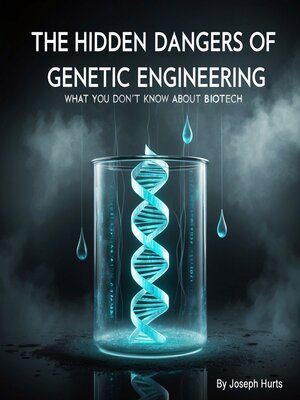The Hidden Dangers of Genetic Engineering
audiobook (Unabridged) ∣ What You Don't Know about Biotech
By Joseph Hurts

Sign up to save your library
With an OverDrive account, you can save your favorite libraries for at-a-glance information about availability. Find out more about OverDrive accounts.
Find this title in Libby, the library reading app by OverDrive.



Search for a digital library with this title
Title found at these libraries:
| Library Name | Distance |
|---|---|
| Loading... |
This audiobook is narrated by a digital voice.
Genetic engineering has fundamentally altered the food supply in ways that represent the largest uncontrolled biological experiment in human history, introducing novel proteins and genetic combinations into crops that have never existed in nature while bypassing the traditional safety testing that would be required for any new food additive or pharmaceutical compound. This transformation of agriculture has occurred largely without public awareness or meaningful consent, creating widespread exposure to genetically modified organisms whose long-term health and environmental effects remain unknown.
Genetically modified crops now constitute the majority of major agricultural commodities including corn, soybeans, cotton, and canola in many countries, with these engineered organisms designed to produce novel proteins that can kill insects or resist herbicide applications. The genes inserted into these crops often come from bacteria, viruses, or other organisms that would never naturally interbreed with food plants, creating protein combinations that human digestive systems have never encountered during evolutionary development.
The substantial equivalence doctrine used by regulatory agencies to approve genetically modified foods assumes that engineered crops are equivalent to conventional varieties if they have similar nutritional profiles, but this approach ignores potential differences in toxins, allergens, antinutrients, and other compounds that could affect human health. This regulatory framework allows genetically modified foods to enter the market without long-term safety testing while placing the burden of proving harm on critics rather than requiring companies to demonstrate safety.







